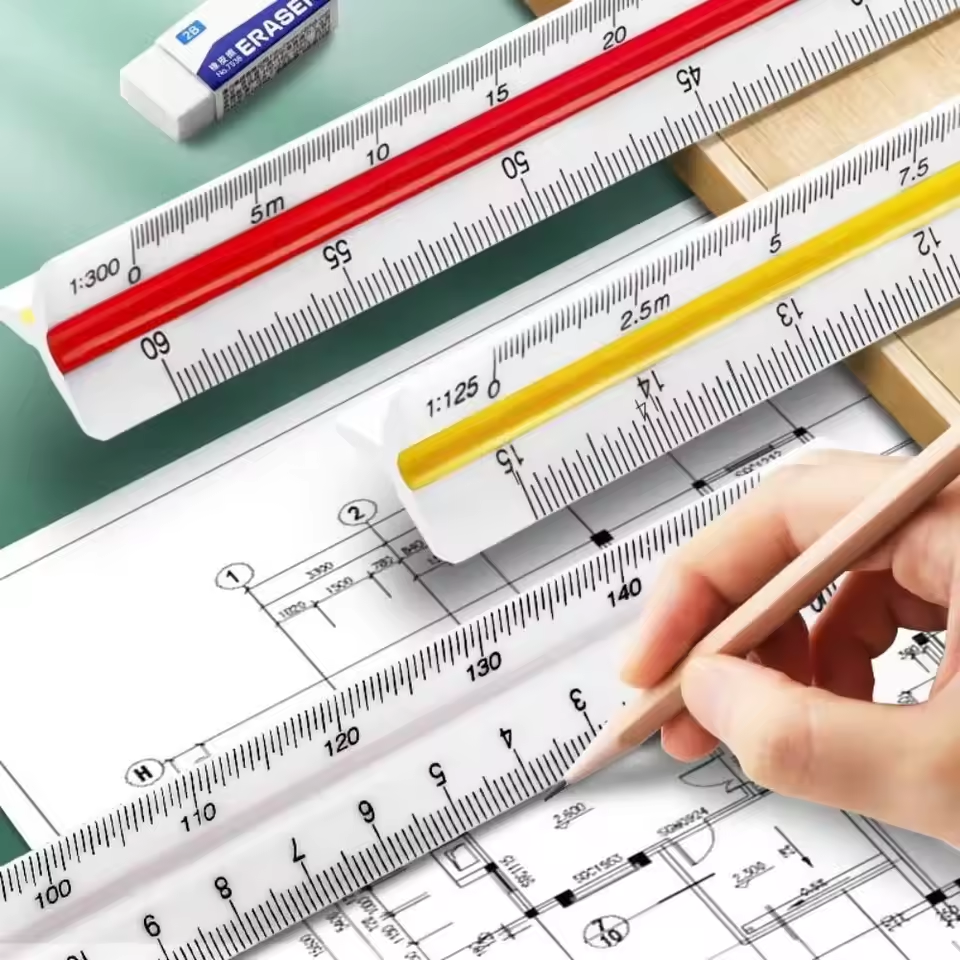Your cart is currently empty!
Mastering the Triangular Scale Ruler: A Guide to Precision and Efficiency
When working on technical drawings, architecture plans, or engineering blueprints, precision is everything. One of the most indispensable tools for professionals and students alike is the triangular scale ruler. If you’ve ever wondered how to use this versatile instrument effectively, this guide will help you unlock its full potential.
What is a Triangular Scale Ruler?
A triangular scale ruler, also known as an architect’s or engineer’s scale, is a specialized ruler with three sides, each carrying multiple scales. Unlike a regular ruler that measures in simple units, this ruler is designed to help you scale drawings up or down accurately and efficiently.
Understanding the Different Scales
Each triangular scale ruler typically has six different scales (two on each edge), which can vary depending on whether it’s an architect’s or engineer’s scale. Here’s a quick breakdown:
- Architect’s Scale (commonly used in building plans):
- Features fractional ratios like 1/4″ = 1′, 1/8″ = 1′, etc.
- Used to translate real-world dimensions into scaled drawings.
- Engineer’s Scale (commonly used in technical and civil engineering drawings):
- Uses decimal-based ratios like 1:10, 1:50, 1:100.
- Ideal for maps, road plans, and industrial schematics.
How to Use a Triangular Scale Ruler Effectively
Step 1: Identify the Correct Scale
Before you begin, determine the scale used in the drawing. Most plans have a key or legend indicating the scale, such as 1/4″ = 1′. Match this to the appropriate edge of the ruler.
Step 2: Align the Zero Mark Correctly
Place the ruler’s zero point at the starting edge of the object you are measuring. This ensures accurate reading and prevents miscalculations.
Step 3: Read the Measurement with Precision
Follow the scale markings along the length of the drawing to measure distances. Since each scale represents different units, ensure you’re reading from the correct edge.
Step 4: Convert Measurements When Necessary
If you need to switch between scales, use basic unit conversions. For example, if a drawing uses a 1:50 scale, every 1 cm on the ruler represents 50 cm in real life.
Step 5: Draw Accurately Using the Scale
When creating new drawings, use the scale to ensure accurate proportions. Align the ruler carefully, mark the required measurements, and maintain consistency throughout your work.
Pro Tips for Using a Triangular Scale Ruler Like a Pro
✔ Keep your ruler clean and free of smudges to maintain clarity in measurements.
✔ Use fine-tip pencils for precise marking when working on drawings.
✔ Store your ruler in a case to prevent damage or fading of the scale markings.
✔ Double-check your chosen scale before measuring or drawing to avoid costly mistakes.
Where to Get a High-Quality Triangular Scale Ruler
If you’re looking for a reliable and precise triangular scale ruler, check out the Triangular Scale Ruler – Measuring and Drawing Tool for Architects, Students, Designers, and Engineers here at Calcsum. Designed for accuracy and durability, it’s perfect for professionals and students alike.
Final Thoughts
Mastering the triangular scale ruler will make your work significantly more efficient and accurate. Whether you are an architect, engineer, or student, understanding how to utilize this tool effectively can elevate your precision and productivity. So next time you pick up your scale ruler, remember these steps and create with confidence!
Do you use a triangular scale ruler in your work or studies? Share your experiences and tips in the comments below!


Leave a Reply